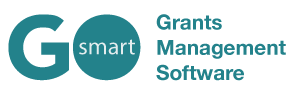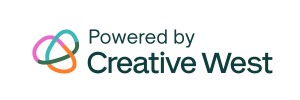Here at GO Smart, we love being a part of what helps our clients accomplish their grantmaking goals. In an effort to showcase a few of the organizations that utilize GO, we wanted to begin with a spotlight on the Arts Council of Anne Arundel County, and specifically, Senior Program Manager Tricia Sanborn, who was kind enough to answer a series of questions about the organization’s approach to grantmaking and the role GO Smart plays in their work.
What is your favorite thing about grantmaking?
I love helping our grantees—it’s always rewarding to be able to provide the operational support they need to pay staff, keep their buildings and offices open, and develop and deliver their arts programming. This year, though, our grantmaking has clearly been critical to many of these organizations, helping them to cover the most basic of expenses. And throughout COVID, it was so inspiring to see the innovation and creativity that so many of our artists and arts organizations have demonstrated. I feel honored to have helped make that possible.
What tends to be your biggest hurdle when it comes to grantmaking?
We fund a breadth of arts organizations, with annual operating budgets that range from $2,500 to over 2.5 million dollars. Some have skilled professional grant writers and development staff, and others are run exclusively by volunteers. It is a huge challenge to create grant programs and processes that are easily understandable, equitably relevant, and scalable enough to accommodate all of our varied stakeholders.
What feels like the biggest risk you take as a grantmaker?
At the moment, we are in the process of reviewing all of our operations, including grantmaking, examining them through a lens of social justice. We realized that to advance the organizational values of diversity, equity, and inclusion, we had to scrap the applications we used previously, discern what we really needed to know, and recraft them from scratch. It’s been a big task, but we think we’ve come up with applications and scoring rubrics that are more focused and simpler for our applicants. They will also provide the actionable information our grants committee needs to make funding decisions that reflect our organizational priorities of DEI.
What is the number one way your grants affect your community?
We are the largest funder of the arts in Anne Arundel County, which is done almost exclusively through our grantmaking. When COVID hit, we were able to secure an additional $1 million in funding through the CARES Act, create two new grant programs, and quickly disseminate this money to both arts organizations and independent artists, which had a huge impact. Now, as we are rebuilding our existing programs, we are using our grantmaking to advance social justice and broaden our base of grantees to include smaller, younger, and non-traditional organizations. This will help us to advance both arts OF the community, as well as arts FOR the community.
What feature in GO Smart has been the most compelling for your work?
I was a grant writer for a large national foundation before coming to the Arts Council, so I’ve used many of the other grantmaking software products that are available. The appeal of GO Smart is that it truly caters to the needs of arts organizations, both funders and applicants. The media storage/display capabilities, panel portal, and grant management capabilities fit our needs as an arts funder.
What would you tell other organizations who are considering licensing GO Smart?
GO Smart is a simple-to-use, customizable, and affordable grantmaking solution for arts funders. It’s easy to learn and master. The best part, though, is the immediate accessibility of the support staff. Their willingness to collaborate to solve problems, discuss ideas, and brainstorm future improvements is really remarkable. They are as invested in your success as you are!
Thanks again to Tricia for her time and consideration. If you would like to learn more about GO Smart, please visit our about us page or click here to schedule a demo.


